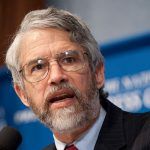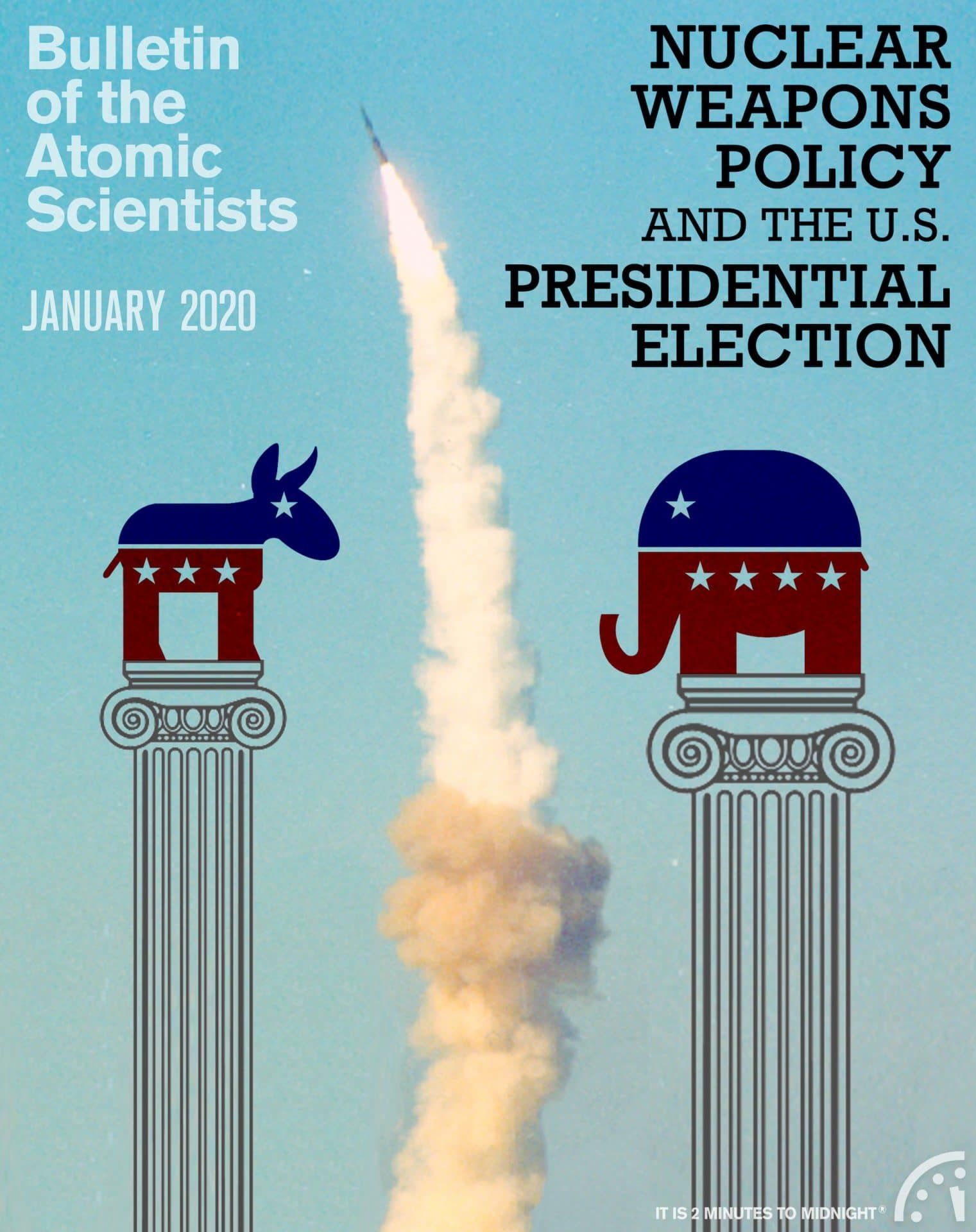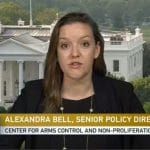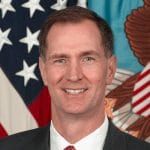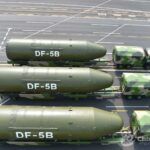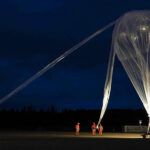The overwhelming case for no first use
By John P. Holdren | January 1, 2020
The overwhelming case for no first use
By John P. Holdren | January 1, 2020
Declaring a policy and posture of no first use of nuclear weapons offers the most conspicuous opportunity not yet taken for the United States to devalue the currency of nuclear weapons in world affairs. Importantly, this step could be accomplished by a US president on his or her own authority, without need for authorization or agreement by the Congress.
Doing so would bring multiple benefits. Notably, it would immediately raise the global credibility of the US stance against nuclear proliferation. It would reduce the incentives of potential adversaries that don’t have nuclear weapons to acquire them. And it would reduce the risks of nuclear use through accident or miscalculation.
It would also render unnecessary the continuous striving to develop and deploy nuclear capabilities that would make US nuclear first use against a nuclear-armed adversary advantageous and therefore credible. No longer striving for such advantage—which is very probably unattainable in any case—would reduce incentives for nuclear armed adversaries to seek to improve their own nuclear forces as a hedge against US gaining a first-use advantage.
As recently argued in a powerful analysis by Steve Fetter and Jon Wolfsthal (2018), moreover, a no first use policy would in no way reduce deterrence of nuclear attack against the United States or its allies. And nuclear weapons are not an effective deterrent against non-nuclear attack because there are few if any scenarios in which a US threat to use nuclear weapons first in response to non-nuclear aggression against the United States or its allies would be credible.
For all these reasons, embracing no first use would be advantageous to the United States whether or not any other nuclear-armed nations (besides China and India, both of which announced no-first-use stances shortly after their first nuclear tests) decide to do the same. There would be no logic in holding out for a no-first-use treaty. We should get on with it—unilaterally.
The history of “first use if necessary”
In reaction to the 1948 Berlin Crisis, the United States adopted a “first use if necessary” stance as a counterweight to the perceived conventional-weapon superiority of the Soviet Union in the European theater (Legge 1983; Bundy 1988; Fetter and Wolfsthal 2018). This stance became the official policy of the NATO alliance and remained so through and beyond the collapse of the Soviet Union in 1991.
In the attempt to make the first-use stance credible, the United States developed and deployed a wide range of “battlefield” nuclear weapons (including artillery shells, land mines, short-range rockets, and, eventually, the “neutron bomb”). This country also invested heavily in developing— and then more or less continuously modernizing—a “triad” of land-based, submarine-launched, and bomber-delivered nuclear weapons that could reach the Soviet Union. The primary aim of this effort was to deter the Soviet Union from responding to battlefield nuclear use with a nuclear attack on the United States. But the Soviet Union determinedly matched (and in some cases exceeded) the growing US nuclear capabilities, placing the credibility of the US first-use stance in continuing doubt (Holdren 1986; NAS 1997).
Soviet conventional superiority was certainly real early in the Cold War years; the United States had demobilized after World War II, and the Soviet Union had not. By the mid-1980s, however, after the economies of the European NATO nations had recovered and powerful NATO integrated conventional forces had been put in place, it became possible to question the Soviet-superiority mantra (Holdren 1983). That, plus continuing doubt about the lack of credibility of the US first-use stance, led to increased questioning of the wisdom of this policy (Holdren 1988; NAS 1997). Nonetheless, NATO unity on its position—first use if necessary—remained firm.
With the collapse of the Soviet Union in 1991, which was followed immediately by a severe economic downturn in the successor Russian Federation and a sharp reduction in its conventional forces, questioning of the need for NATO’s first-use posture came more to the fore. Although NATO pointedly reaffirmed its first-use posture in 1991, President Clinton’s first Secretary of Defense, Les Aspin, ordered a review of US nuclear policy in 1993 and “stated that no first use could form the basis of a new nonproliferation policy” (Fetter and Wolfsthal 2018). The 1994 Nuclear Posture Review (NPR) that emerged after Aspin’s retirement, however, rejected no first use.
As part of its report, “The Future of US Nuclear Weapon Policy” (NAS 1997), the prominent Committee on International Security and Arms Control of the US National Academy of Sciences issued a particularly emphatic call for change in the posture, explicitly addressing the arguments to the contrary in the 1994 NPR.[1] It recommended flatly that the United States should “no longer threaten to respond with nuclear weapons against conventional, chemical, or biological attacks.” Consistent with this stance, the report suggested that the United States should declare that the sole function of US nuclear forces is “deterring nuclear attack, or coercion by threat of nuclear attack, against the United States or its allies.”
In 1998, a coalition German government proposed that NATO revisit its first-use posture, and Canada’s foreign minister likewise expressed support for the idea, but these overtures were rejected by the United States, France, and the UK (Arms Control Association 1998). Meanwhile, the Russian Federation itself had disavowed in 1993 the Soviet Union’s stated policy of no first use, noting that the conventional military balance in Europe had drastically shifted in NATO’s favor (Schmemann 1993).
US Nuclear Posture Reviews issued in 2002 and 2010 again declined to embrace no first use. Late in the Obama administration, however, journalists reported that President Obama was giving serious consideration to no first use as one of a number of possibilities for advancing, at the end of his tenure, the vision, which he had enunciated in Prague in April 2009, for reducing the salience of nuclear weapons in international affairs (Rogin 2016). This possibility elicited a flood of articles by senior arms control advocates and military officials encouraging Obama to embrace no first use (Cartright and Blair 2016; Perry 2016; Reif and Kimball 2016; Thakur 2016), as well as counterattacks proposing rejection of the idea (Payne 2016; Sestanovich 2016). In the end, Obama did not announce a change in US first-use policy, reportedly because of concerns expressed by allies (Fetter and Wolfsthal 2018). Even so, Vice President Biden said in his final national-security speech that it “is hard to envision a plausible scenario in which the first use of nuclear weapons by the United States would be necessary or make sense” (Biden 2017).
To no one’s great surprise, the Nuclear Posture Review issued under President Trump in 2018 once again reaffirmed the policy of first use if necessary, explicitly citing its purported usefulness against both nonnuclear and nuclear threats (DoD 2018).
The case in favor of a change in US nuclear policy
Among the many arguments that support changing US nuclear weapons policy to a no-first-use stance, five stand out in my mind as so strong, when taken together, as to be dispositive.
With respect to nonproliferation. When the country with the most capable conventional forces the world has ever seen insists that it nonetheless needs nuclear weapons to deter and respond to non‐nuclear attacks, it is logically conceding, to any country that fears or professes to fear attack by another, the right to acquire its own nuclear weapons to deter or respond to such attacks. The US stance of “first use if we think we need to” undermines, in the eyes of most of the world, any moral authority the United States might wish to assert against the acquisition of nuclear weapons by others. And if potential adversaries that don’t possess nuclear weapons think the United States would use nuclear weapons against their conventional forces or in retaliation for an actual (or suspected!) chemical or biological attack, that can only increase their incentive to acquire nuclear weapons of their own.
With respect to the benefits of not seeking to make US first use credible. When the United States deploys nuclear weapons of types and in postures intended to make first‐use credible, it not only incentivizes non‐nuclear‐armed potential adversaries to get their own nuclear weapons; it also incentivizes this country’s nuclear‐armed potential foes to upgrade their nuclear forces to deny the United States any first‐use advantage (or to gain such an advantage for themselves). As the Cold War demonstrated, this syndrome drives a potentially endless cycle of action and reaction, compounded by worst‐case assessment on both sides. This arms racing is not only endlessly costly; it can actually increase the danger that a crisis will escalate to nuclear war when one side or the other perceives it would be better off going first.
Against the argument that allies will oppose no first use. The argument that Germany, Japan, and South Korea would necessarily resist and resent a US shift to a no‐first‐use policy and posture—and indeed might be propelled into acquiring their own nuclear deterrent—is questionable.
First of all, nobody is proposing that the US nuclear umbrella deterring nuclear threats or attacks against US allies would be withdrawn under no first use. To misunderstand this reality is to conflate the two forms of extension in the term “extended deterrence”: extension of the nuclear umbrella to protect allies, as opposed to extension to cover nonnuclear threats. It’s the latter form of extended deterrence, extension to non‐nuclear threats, that would be renounced under no first use. The United States should be crystal clear in reassuring its allies—and reminding potential adversaries—on this point.
Second, public and leadership opinion on the proper role of US nuclear weapons is undoubtedly not uniform in any of these countries. Whether people think they want non‐nuclear threats against them to be deterred or responded to with US nuclear weapons varies with many factors, including whether they think deterrence will assuredly work and whether they think, if it doesn’t, nuclear weapons will end up exploding on or near their own territory. (The Cold War saying that “the towns in Germany are two kilotons apart” is relevant here.) And Japan’s leaders would do well to consider the direction the fallout would travel if the United States attacked North Korea with nuclear weapons.
Third, US allies should see a declaration of no first use as an expression of this country’s confidence in the capabilities of its conventional forces to deter or defeat any non‐nuclear threat from a state adversary. (Non‐state adversaries, of course, may not be deterrable.) And, if US allies are thinking clearly, they will conclude that the US pledge to come to their defense if they are attacked is actually more believable by all concerned if it based on defending them with conventional rather than nuclear forces.
Against the argument that US conventional superiority is not guaranteed. Of course, it will likely always be true that the United States (or NATO) cannot be immediately superior on the ground, in the air, or at sea at every location where need for conventional force projection might arise. The real question is whether the explicit threat to use nuclear weapons first in such a circumstance is a sensible way to deal with that reality. I believe that making this threat brings a very small benefit at a very large cost to our nonproliferation goals, as well as to arms‐race stability and crisis stability in cases where the prospective adversary is a nuclear‐weapon state.
The benefit is small because—whatever an adversary’s estimate of the probability that the United States, under our current declaratory policy and posture, would actually use nuclear weapons against a conventional attack—the propensity to worst‐case assessment means that the adversary’s estimate of that probability won’t be a whole lot smaller under a US no‐first‐use stance. That is, the mere existence of US nuclear weapons induces a non‐negligible degree of caution on the part of adversaries contemplating aggression, irrespective of US declaratory policy and the details of posture.
Besides, there are better remedies for the problem: Some are already in hand (such as conventional precision strike), and some are attainable at a more favorable ratio of benefit to cost and risk than that of our first‐use stance (such as increasing our capacity to deploy troops, weapons, and supply chains rapidly to wherever they are needed).
Against the argument that “first use if necessary” is needed to deter, defeat, or retaliate against chemical or biological weapons use. This is a weak argument for several reasons.
The deterrence component has the same weaknesses as for deterring conventional attacks with nuclear weapons—most notably, the low salience of declaratory policy in the worse‐case calculus of potential state adversaries—on top of a low likelihood that potential state adversaries of the United States would see benefit in attacking this country or its allies with chemical or biological weapons unless they saw a way to do so without the United States being able to determine the source. In the case of non‐state adversaries that may not even be under the control of the state(s) where they’re based, deterrence by threat of nuclear response is even less germane.
As for defeating such attacks, it’s hard to envision circumstances where nuclear weapons would be of any use, except for pre‐emptive strikes against deeply buried chemical and biological weapons storage or manufacturing sites. In the case of deeply buried sites, the world would almost surely see using nuclear weapons to attack them pre‐emptively as disproportionate, leading to universal condemnation.
Retaliating with nuclear weapons against chemical or biological weapons use (in the subset of cases where the source was clear) would likewise almost certainly be seen as disproportionate. Indeed, the disproportionality aspect makes it so unlikely that any US president would order either a pre‐emptive or retaliatory nuclear attack in the chemical and biological weapons context that including the option in declaratory policy seems perverse, given the downsides of doing so.
Against the argument that NATO shouldn’t change a “winning game.” The argument that NATO’s posture of “first use if necessary” contributed importantly to keeping the peace in the Cold War, so why should we change a winning game, is logically suspect and empirically untestable (NAS 1997). Were the Soviets deterred from a conventional invasion of Western Europe by the threat of NATO nuclear‐weapon use? Or did their attempts to neutralize that nuclear threat and our attempts to shore it up—both sides seeking “escalation dominance”—contribute to a destabilizing competition in nuclear armaments and postures that made war more rather than less likely? Did we escape World War III because we were smart, or because we were lucky? We will never know. And we should not wish to rerun the experiment to get more data.
Against the argument that, outside the peace movement and countries that don’t matter, no one would give the United States any credit for a no‐first‐use declaration. This argument ignores the transformation a US no first‐use declaration, backed up by changes in posture, would bring to the moral standing of the United States in the global discussion about both nonproliferation and reducing the role of nuclear weapons in the policies of countries that have them. It also ignores the statements in favor of the United States taking a no‐first‐use position that have been made by many experienced statesmen, nuclear‐weapon experts, and retired military leaders from countries that do matter.
A concluding recommendation
Some of the arguments against a US declaration of no first use have some plausibility, but they pale in comparison to the arguments in favor. The United States should have taken the no-first-use step long ago, and the next administration, after due consultation with US allies, should take it as a high priority after the start of the new term in 2021.
Disclosure statement
No potential conflict of interest was reported by the authors.
Funding
This research received no specific grant from any funding agency in the public, commercial, or not-for-profit sectors.
Author information
John P. Holdren is Teresa and John Heinz Professor of Environmental Policy in the John F. Kennedy School of Government, Professor of Environmental Science and Policy in the Department of Earth and Planetary Sciences, and Affiliated Professor in the John A. Paulson School of Engineering and Applied Science, at Harvard University. He served from January 2009 until January 2017 as Science Advisor to President Barack Obama.
References
Arms Control Today. 1998. “Germany Raises First-Use Issue at NATO Meeting.” Arms Control Today Press Release. November. https://www.armscontrol.org/act/1998-11/press-releases/germany-raises-first-use-issue-nato-meeting
Biden, Joseph. 2017. “Remarks by the Vice President on National Security,” Executive Office of the President of the United States. 12 January. https://obamawhitehouse.archives.gov/the-press-office/2017/01/12/remarks-vice-president-nuclear-security
Cartwright, J.E., and B.J. Blair. 2016. “End the First-Use Policy for Nuclear Weapons”, The New York Times, August 14. https://www.nytimes.com/2016/08/15/opinion/end-the-first-use-policy-for-nuclear-weapons.html
DoD. 2018. Nuclear Posture Review 2018. Washington, DC: Department of Defense. https://dod.defense.gov/News/SpecialReports/2018NuclearPostureReview.aspx
Fetter, Steve, and Jon Wolfsthal. 2018. “No First Use and Credible Deterrence”. Journal for Peace and Nuclear Disarmament: 1-13, https://doi.org/10.1080/25751654.2018.1454257
Holdren, J.P. 1983. “Why Does Reagan Say America is Behind?” The Christian Science Monitor, “Opinions and Commentary”, 23, 12 April.
Holdren, J.P. 1986. “The Dynamics of the Nuclear Arms Race: History, Status, Prospects,” in Nuclear Weapons and the Future of Humanity, edited by Avner Cohen and Steven Lee, Chapter 2, Totowa, NJ: Rowman and Allenheld.
Holdren, J. P. 1988. “Extended Deterrence, No‑First‑Use, and European Security,” in Coexistence, Cooperation, and Common Security, edited by Joseph Rotblat and . Laszlo Valki. 81-98, London: MacMillan.
Legge, J. M. 1983. Theater Nuclear Weapons and the NATO Strategy of Flexible Response. Santa Monica: Rand Corporation.
NAS 1997. The Future of U.S. Nuclear Weapon Policy. Report of the Committee on International Security and Arms Control. Washington, DC: National Academy Press. http://www.nap.edu/catalog/5796/the‐future‐of‐us‐nuclear‐weapons‐policy
Payne, K. 2016. “Once Again: Why a ‘No First Use’ Nuclear Policy Is a Very Bad Idea,” National Review. July 6. https://www.nationalreview.com/2016/07/no-first-use-nuclear/
Perry, W. 2016. “American Would Never Be the First to Use Nukes. So Why Say We Might?” William J. Perry Project. August 2. http://www.wjperryproject.org/notes-from-the-brink/obama-no-first-use-policy
Reif, Kingston, and Daryl G. Kimball, “Rethink Oldthink on No First Use,” Bulletin of the Atomic Scientists, August 29. https://thebulletin.org/2016/08/rethink-oldthink-on-no-first-use/
Rogin, J. 2016. “Obama Plans Major Nuclear Policy Changes in His Final Months,” Washington Post. July 10. https://www.washingtonpost.com/opinions/global-opinions/obama-plans-major-nuclear-policy-changes-in-his-final-months/2016/07/10/fef3d5ca-4521-11e6-88d0-6adee48be8bc_story.html
Sanger, D.E., and W.J. Broad. 2016. “Obama Unlikely to Vow No First Use of Nuclear Weapons,” The New York Times. September 5. https://www.nytimes.com/2016/09/06/science/obama-unlikely-to-vow-no-first-use-of-nuclear-weapons.html
Sestanovich, Stephen. 2016. “The Costs of an American No First Use Doctrine,” The Wall Street Journal. August 15. https://blogs.wsj.com/washwire/2016/08/15/the-costs-of-an-american-no-first-use-nuclear-doctrine/
Schmemann, Serge. 1993. “Russia Drops Pledge of No First Use of Atom Arms”, New York Times, Section A, 8 https://www.nytimes.com/1993/11/04/world/russia-drops-pledge-of-no-first-use-of-atom-arms.html
Thakur, Ramesh. 2016. “Why Obama Should Declare a No-First-Use Policy for Nuclear Weapons,” Bulletin of the Atomic Scientists. August 19. https://thebulletin.org/2016/08/why-obama-should-declare-a-no-first-use-policy-for-nuclear-weapons/
[1] The authors included a retired Air Force four‐star who had stepped down just three years earlier as the head of the US Strategic Command, a former director of the Sandia National Laboratory, the designer of the first deliverable hydrogen bomb, and, as chair of the study, the retired two‐star Army general who had served as President Reagan’s Arms Control and Disarmament Agency director and earlier had commanded US tactical nuclear weapon is Europe. Disclosure: I was the chairman of the Committee on International Security and Arms Control at the time.
Together, we make the world safer.
The Bulletin elevates expert voices above the noise. But as an independent nonprofit organization, our operations depend on the support of readers like you. Help us continue to deliver quality journalism that holds leaders accountable. Your support of our work at any level is important. In return, we promise our coverage will be understandable, influential, vigilant, solution-oriented, and fair-minded. Together we can make a difference.
